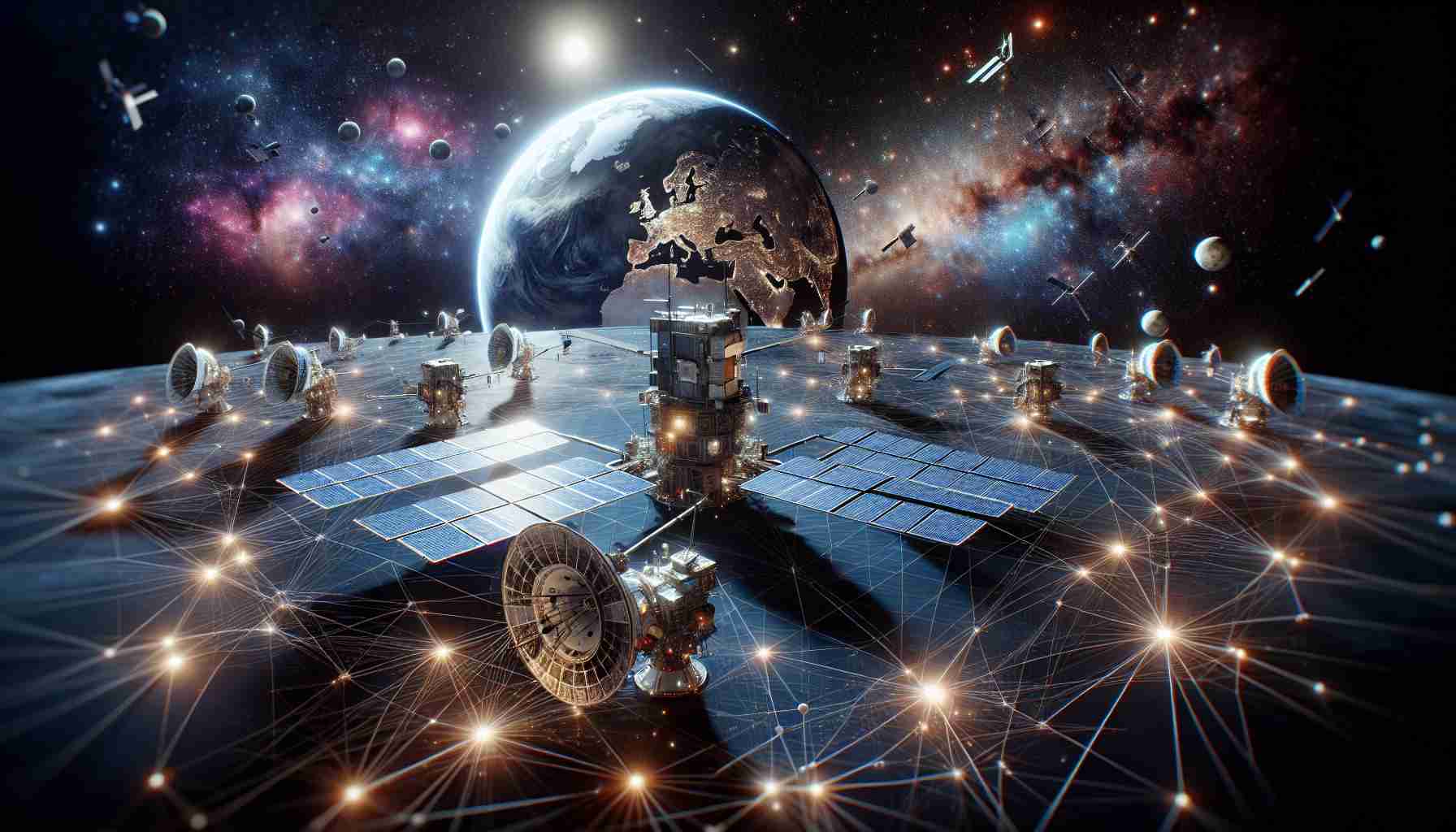
Volta Space Technologies, a pioneering startup based in Montreal, is working on an innovative solution to support lunar exploration by creating a satellite network designed to deliver power to spacecraft on the Moon’s surface. This ambitious project aims to equip satellites in lunar orbit that will harness solar energy and transmit it via laser beams to various landers and rovers on the Moon. By doing this, the system would enable these vehicles to continue their operations during the lengthy lunar nights or within areas that are perpetually shadowed, enhancing their functionality.
The proposed system, dubbed LightGrid, is intended to consist of a fleet of small satellites orbiting the Moon, which would collect solar energy and wirelessly transfer it to receivers stationed on lunar equipment. The technology for laser power transmission has already been successfully tested on Earth, with plans for further trials in space slated for 2026.
Volta’s vision includes deploying at least three satellites in low lunar orbits to establish a foundational service for users on the lunar surface. This approach is feasible as it simplifies the scaling of operations compared to traditional ground-based power systems.
In addition to its lunar ambitions, Volta is exploring diverse applications for its technology. These could potentially include power transmission for other satellites, emergency services, and even terrestrial applications, significantly broadening the impact of their innovation in both space and on Earth.
New Satellite Network to Empower Lunar Missions
In response to the increasing interest in lunar exploration, Volta Space Technologies is advancing its project, LightGrid, which offers an innovative satellite network that aims to revolutionize how we operate on the Moon. This initiative is crucial as international and commercial ambitions to return humans to the Moon and establish a permanent presence continue to gain momentum.
Key Questions and Answers
1. What are the primary objectives of the LightGrid system?
The LightGrid system aims to provide continuous power to lunar missions, enabling landers and rovers to function effectively during lunar nights and in shadowed regions, which traditionally have faced operational challenges due to the absence of solar power.
2. How will the technology work in practice?
Utilizing compact satellites that harness solar energy, LightGrid will relay power via laser beams to receiving stations on lunar equipment. This method is intended to eliminate the need for extensive ground infrastructure, thereby simplifying mission logistics and reducing costs.
3. What timeline is Volta Space Technologies looking at for deployment?
Initial trials for the laser transmission technology are expected to be carried out in space beginning in 2026. Volta aims to establish its foundational network with at least three operational satellites soon thereafter.
Key Challenges and Controversies
The vision for LightGrid does not come without hurdles. One significant challenge is ensuring the safety and efficiency of laser power transmission. The use of lasers in space raises concerns over potential interference with other spacecraft and hazards to lunar exploration personnel. Additionally, the technology’s reliability over long durations in the harsh lunar environment must be rigorously tested.
Another controversy revolves around the accessibility of this technology. While the initiative is designed to provide power to various lunar missions, there are questions regarding equitable access among different stakeholders, including government agencies, commercial entities, and international partners.
Advantages and Disadvantages
Advantages:
– Increased Operational Time: The LightGrid system allows for extended operations beyond sunlight hours, maximizing the time lunar rovers and landers can conduct research and exploration.
– Scalability: The modular nature of satellite deployment enables incremental scaling of services as more missions are developed.
– Innovation Potential: The technology has versatile applications that could extend beyond lunar missions, impacting energy transmission on Earth and in low Earth orbit.
Disadvantages:
– High Initial Costs: The development and launch of the satellites, alongside the technology’s testing and implementation, could require significant financial investment upfront.
– Technical Risks: The reliability of laser power transmission in the moon’s unique conditions remains to be proven, and failures could jeopardize missions that depend on this technology.
As lunar exploration enters a new era, initiatives like Volta Space Technologies’ LightGrid offer a glimpse of the potential for advanced technologies to enhance our capability beyond Earth. However, balancing innovation with safety, accessibility, and cost-effectiveness will be critical in ensuring the success of lunar missions.
For further details on lunar exploration and technology, visit NASA and ESA.



